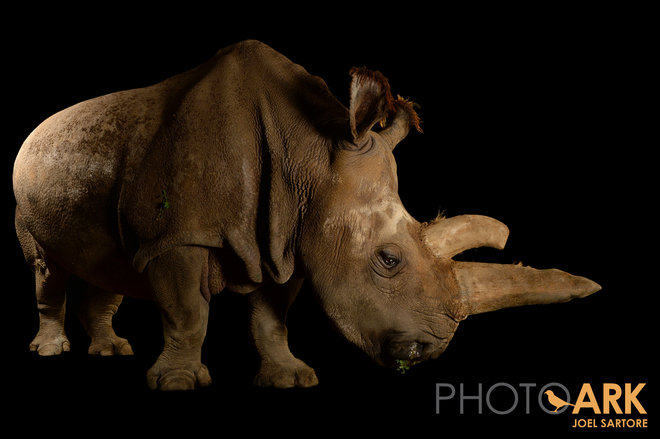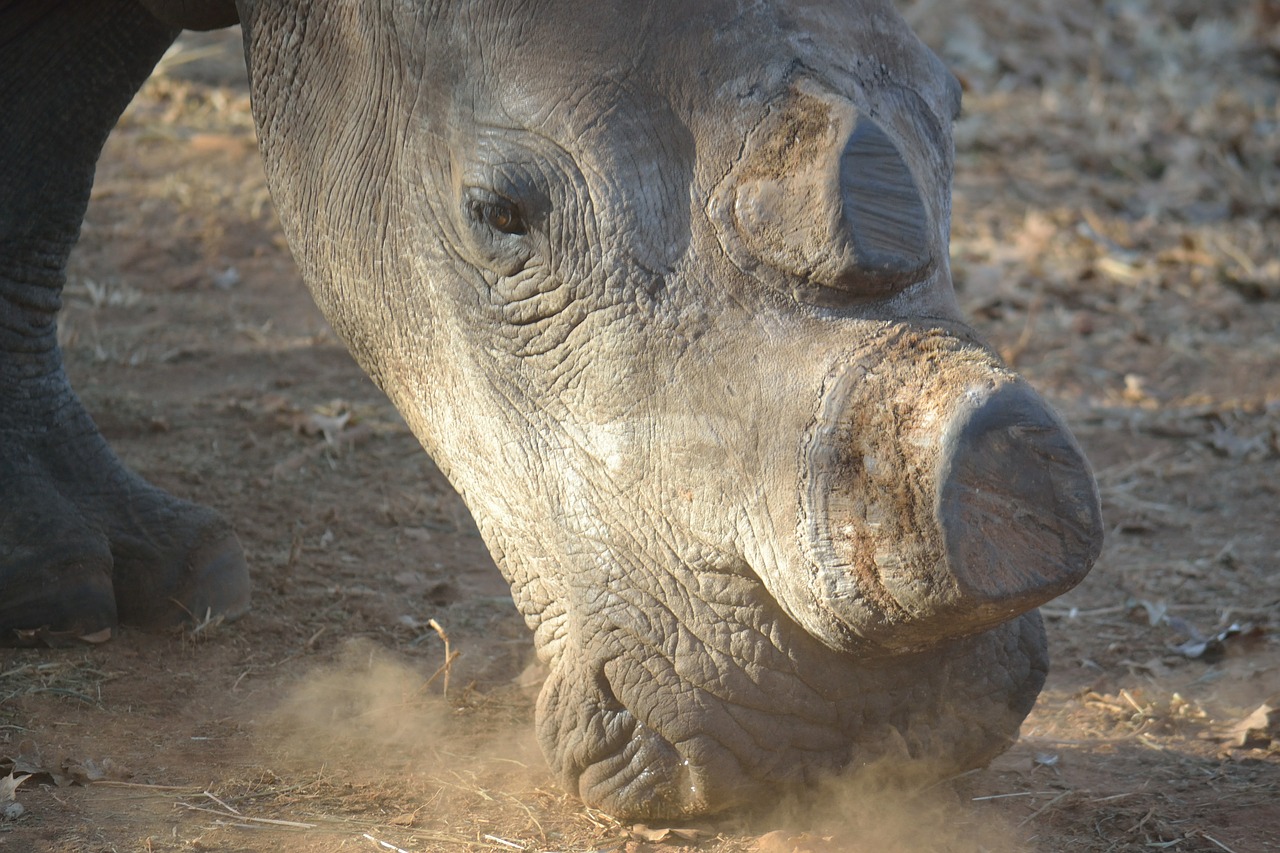With the loss this summer of Nabire, a female white rhino, only four of her species remain.
The recent news of the killing of Cecil, a Southwest African lion, by an American sport hunter in the Hwange National Park in Zimbabwe has sparked the internet into a rage and sent the hunter into hiding. According to reports from the park, Cecil was injured with an arrow and suffered for nearly two days until he was tracked, shot, beheaded and skinned, presumably as a trophy.
The horrific killing of the majestic creature has coincided with more bad news for endangered species — this time for the northern white rhino, of which there are now only four.
Nabire, one of the five northern white rhinos remaining on the planet, died on July 27 in a Czech Republic zoo that has been part of a last ditch effort to save the species.
“Her species is on the very brink of extinction,” said the director of the Dvur Kralove Zoo, Premysl Rabas in a statement. ”It is a terrible loss. Nabire was the kindest rhino ever bred in our zoo. It is not just that we were very fond of her. Her death is a symbol of the catastrophic decline of rhinos due to a senseless human greed.”
 |
At 31 years-old Nabire died from a large, inoperable, ruptured cyst — she had spent her entire life at the zoo.
Because she was one of the few females left in her species, following her death, researchers removed an ovary in hopes that she might become an egg donor for in vitro fertilization, which could result in an artificial embryo.
There is little hope that the remaining northern white rhinos have the ability to mate and reproduce naturally. Of the four rhinos, two females, Najin and Fatu, as well as the only male, Sudan, all live together at the Ol Pejeta Conservancy in Kenya. The fourth rhino, a female named Nola lives at the San Diego Zoo in California.
At the ripe rhino age of 42 years-old, Sudan is the last remaining male of the northern white rhino species and is under armed guard 24 hours a day.
His horn has been trimmed to deter poachers.
 |
Poaching is the primary cause behind the near extinction of the northern white rhino and is threatening other rhino subspecies as well.
A long used ingredient in traditional Chinese medicines as well as a symbol of status in some countries, rhino horn has become incredibly valuable — even surpassing the price of gold in 2012.
Vietnam has been cited as a major source of the demand for the horn due to the belief that, when the horn is ground into a powder and ingested, it can be used to cure hangovers and cancer among a variety of other cultural uses throughout Asia and parts of the Middle East. There is little evidence, however, to support the medical claims made about rhino horn powder, including the myth that it serves as an aphrodisiac.
There is hope for the species though — African rhino populations have been increasing their numbers thanks to conservation efforts, yet certain subspecies of rhinoceros, especially in Asia, continue to be listed as vulnerable to critically endangered by the World Wide Fund for Nature (WWF).
African rhino populations have recovered somewhat, reaching more than 25,000, while some Asian rhino subspecies such as the Sumatran and Javan rhino have anywhere from a few dozen to 200 individuals left. The worldwide wild rhino population is estimated at 29,000, down from 500,000 at the beginning of the 20th century, according to Save The Rhino.
To help stop or at least stem the tide of brutal slaughter, a number of tech solutions have been proposed.
In South Africa, where the poaching of rhinos has hit record high levels, and one is killed every six hours, a real-time anti-poaching intelligence device known as RAPID has been deployed through cameras installed into living rhinos’ horns.
“With this device, the heart monitor triggers the alarm the instant heart rate rises or falls, the video camera confirms why, and if it appears to be a poaching risk, the GPS pinpoints the location within a few meters so that rangers can be on the scene via helicopter or truck within minutes, leaving poachers no time to harvest the valuable parts of an animal or make good an escape,” said Dr. Paul O'Donoghue, a scientific advisor for Protect Worldwide, which developed RAPID.
“You can't outrun a helicopter, the Protect RAPID renders poaching a pointless exercise," he said.
You can view RAPID rhino-cam footage here.

By installing a camera into the horns of rhinos being hunted to extinction, the Protect Worldwide company hopes to give conservation the edge over poachers and end the senseless slaughter of rhinos. (Protect Worldwide)
In addition, the Rhino Rescue Project has also developed a “pink poison” that can be injected into rhino horns, causing no harm to rhinos or other wildlife, but can cause severe nausea, vomiting and convulsions in humans who consume the horn.
The poison also contains a dye that discolors the interior of the horn, effectively ruining it for the ornamental purposes it is also sought out for.
Let’s hope some of these tactics, in addition to the conservation efforts of the Dvur Kralove Zoo, will stem the tide towards extinction and save these species.








Facebook comments